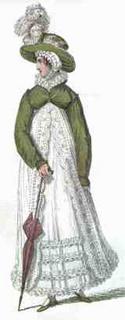Calf’s Head Pie.
Chuse a young Head that has fine white Meat upon it, clean it perfectly well, and then boil it in a large Quantity of Water till it is fit for eating ; take it up, let it drain and cool, then carefully cut off all the Flesh, and divide it into long Pieces of the Breadth of two Fingers.
Take out the Eyes, and cut them crossway into four Pieces each; slice the Tongue into Slices as thick as a Crown Piece, and when all is thus mixed, dust over it some Pepper and Salt.
Make a very good Puff-paste Crust, and cover a Dish with it, lay in the Yolks of’ four hard Eggs, and a few Truffles, then put in some Pieces of the Tongue: After this lay in the Meat of the Head, and then the Eyes in different Places, mixed with the Pieces of the Tongue that remain; dust on very carefully some Cayan-Pepper, mixed with Basket Salt, to make it spread evenly, then dash over the whole, Half a Gill of Madeira Wine ; then pour in Half a Pint of Veal Gravy, and covering up the Pie, send it to the Oven.
[As she later speaks of the pie coming home, she seems to be assuming it will go out to be baked. Good, large baking ovens were often no available in the house.]
While it is baking, boil the Bones of’ the Head in two Quarts of Water, let them boil till there is but a Pint left ; and as they are boiling, put in a Couple of whole Cloves, an Onion, and some Winter Savoury; let these boil to the small Quantity just named, and then strain the liquor off; put it into a saucepan, and add a little Cayan-Pepper, two spoonfuls of Catchup, Half a Gill of red Wine, and a Piece of Butter rolled in Flour, thicken it up in this Manner, arid have it ready when the Pie comes in.
Boil the Brains with a Dozen Leaves of red Sage; chop the Brains and Sage both very fine, and dust over them a very little Cayan-Pepper, and a Spoonful of Madeira Wine; add a little Lemon-peel, and some grated Nutmeg: When all this is thus mixed, stir in a little of it into the thickened Gravy, and heat up the rest with some Yolks of Eggs and fry it in Cakes.Boil the Eggs hard, and take out the Yolks.
All these Things being ready when the Pie comes home, heat Half a Gill of Madeira Wine with a Blade of Mace; take out the Mace, lift off the Lid of the Pie whole, and first of all sprinkle in the hot Madeira Wine. Then lay in the Yolks of Eggs, and the Cakes of Brains one among another, and then pour in the hot Gravy, and send it up without the Lid.
This is one of the finest Pies that can be made. Every one who eats it commends it, and I have heard many who were very well acquainted with the Taste of Turtle say, it was a Turtle Pie. The Reason of this is, partly that the Flesh of a Calf’s Head is really like Turtle, and partly because the Madeira Wine and Cayan-Pepper give it the same Flavour that a Turtle gets in the dressing, these being the two principal Ingredients.
I have my Christmas page up on my website, along with a free story, but the story doesn't use any weird historical data, unless you think the word "haberdashery" is weird.
http://www.jobeverley.com/xmas2005.html
Jo :)






